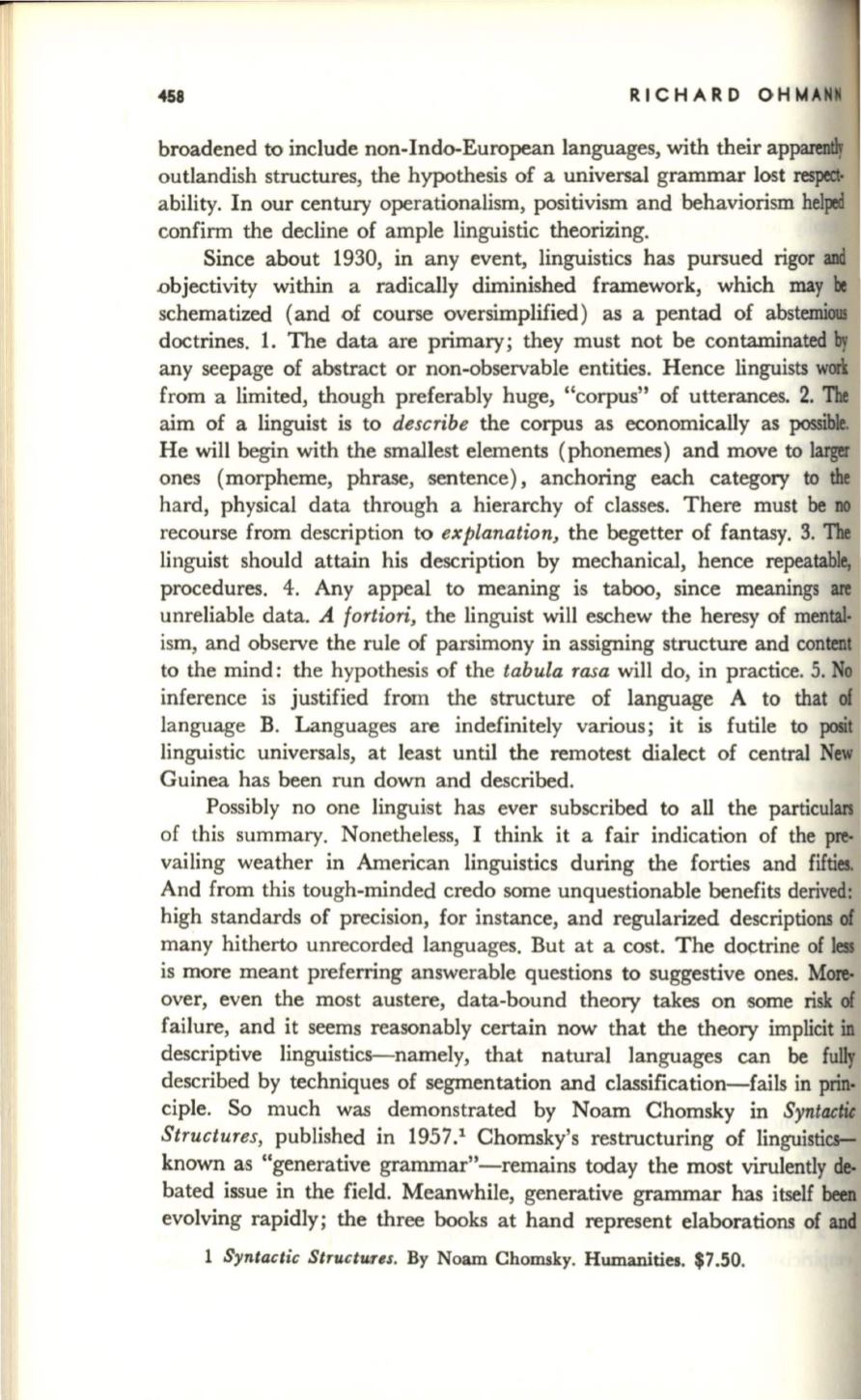
458
RIC H A R0 OH
MANN
broadened to include non-Indo-European languages, with their appa.rently
outlandish structures, the hypothesis of a universal grammar lost
respect·
ability. In our century operationalism, positivism and behaviorism helped
confirm the decline of ample linguistic theorizing.
Since about
1930,
in any event, linguistics has pursued rigor
and
.objectivity within a radically diminished framework, which may
be
schematized (and of course oversimplified) as a pentad of abstemiom
doctrines. 1. The data are primary; they must not be contaminated
by
any seepage of abstract or non-observable entities. Hence linguists
wm
from a limited, though preferably huge, "corpus" of utterances. 2. 1h
aim of a linguist is to
describe
the corpus as economically as
possible.
He will begin with the smallest elements (phonemes) and move to larger
ones (morpheme, phrase, sentence), anchoring each category
to
the
hard, physical data through a hierarchy of classes. There must
be
no
recourse from description to
explanation,
the begetter of fantasy. 3.
The
linguist should attain his description by mechanical, hence repeatable,
procedures. 4. Any appeal
to
meaning
is
taboo, since meanings are
unreliable data.
A fortiori,
the linguist will eschew the heresy of
mental·
ism, and observe the rule of parsimony in assigning structure and content
to the mind: the hypothesis of the
tabula rasa
will do, in practice. 5. No
inference is justified from the 6tructure of language A to that of
language
B.
Languages are indefinitely various; it is futile
to
posit
linguistic universals, at least until the remotest dialect of central New
Guinea has been run down and described.
Possibly no one lingui-st has ever subscribed
to
all the particulan
of this summary. Nonetheless, I think it a fair indication of the pre–
vailing weather in American linguistics during the forties and fifties.
And from this tough-minded credo some unquestionable benefits derived:
high standards of precision, for instance, and regularized descriptions
of
many hitherto unrecorded languages. But at a cost. The doctrine of less
is more meant preferring answerable questions to suggestive ones. More–
over, even the most austere, data-bound theory takes on 60me risk
of
failure, and it seems reasonably certain now that the theory implicit
in
descriptive linguistics-namely, that natural languages can
be
fully
described by techniques of segmentation and classification-fails in prin.
ciple.
So
much was demonstrated by Noam Chomsky in
Syntactie
Structures,
published in
1957.
1
Chomsky's restructuring of linguistics–
known a-s "generative grammar"-remains today the most virulently de–
bated issue in the field. Meanwhile, generative grammar has itself
been
evolving rapidly; the three books at hand represent elaborations of and
1
Syntactic Structu.res.
By Noam Chomsky. Humanities. $7.50.


